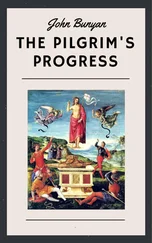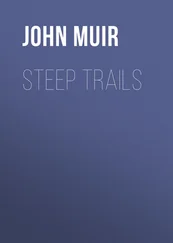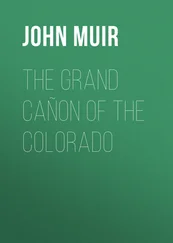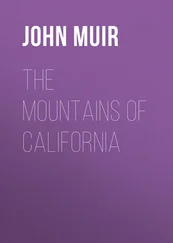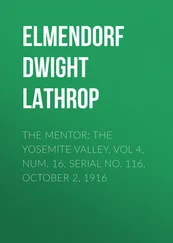John Muir - The Yosemite
Здесь есть возможность читать онлайн «John Muir - The Yosemite» — ознакомительный отрывок электронной книги совершенно бесплатно, а после прочтения отрывка купить полную версию. В некоторых случаях можно слушать аудио, скачать через торрент в формате fb2 и присутствует краткое содержание. Жанр: Путешествия и география, История, foreign_edu, foreign_antique, foreign_prose, на английском языке. Описание произведения, (предисловие) а так же отзывы посетителей доступны на портале библиотеки ЛибКат.
- Название:The Yosemite
- Автор:
- Жанр:
- Год:неизвестен
- ISBN:нет данных
- Рейтинг книги:3 / 5. Голосов: 1
-
Избранное:Добавить в избранное
- Отзывы:
-
Ваша оценка:
- 60
- 1
- 2
- 3
- 4
- 5
The Yosemite: краткое содержание, описание и аннотация
Предлагаем к чтению аннотацию, описание, краткое содержание или предисловие (зависит от того, что написал сам автор книги «The Yosemite»). Если вы не нашли необходимую информацию о книге — напишите в комментариях, мы постараемся отыскать её.
The Yosemite — читать онлайн ознакомительный отрывок
Ниже представлен текст книги, разбитый по страницам. Система сохранения места последней прочитанной страницы, позволяет с удобством читать онлайн бесплатно книгу «The Yosemite», без необходимости каждый раз заново искать на чём Вы остановились. Поставьте закладку, и сможете в любой момент перейти на страницу, на которой закончили чтение.
Интервал:
Закладка:
For about a mile above Mirror Lake the Tenaya Cañon is level, and richly planted with fir, Douglas spruce and libocedrus, forming a remarkably fine grove, at the head of which is the Tenaya Fall. Though seldom seen or described, this is, I think, the most picturesque of all the small falls. A considerable distance above it, Tenaya Creek comes hurrying down, white and foamy, over a flat pavement inclined at an angle of about eighteen degrees. In time of high water this sheet of rapids is nearly seventy feet wide, and is varied in a very striking way by three parallel furrows that extend in the direction of its flow. These furrows, worn by the action of the stream upon cleavage joints, vary in width, are slightly sinuous, and have large boulders firmly wedged in them here and there in narrow places, giving rise, of course, to a complicated series of wild dashes, doublings, and upleaping arches in the swift torrent. Just before it reaches the head of the fall the current is divided, the left division making a vertical drop of about eighty feet in a romantic, leafy, flowery, mossy nook, while the other forms a rugged cascade.
The Royal Arch Fall in time of high water is a magnificent object, forming a broad ornamental sheet in front of the arches. The two Sentinel Cascades, 3000 feet high, are also grand spectacles when the snow is melting fast in the spring, but by the middle of summer they have diminished to mere streaks scarce noticeable amid their sublime surroundings.
The Beauty Of The Rainbows
The Bridal Veil and Vernal Falls are famous for their rainbows; and special visits to them are often made when the sun shines into the spray at the most favorable angle. But amid the spray and foam and fine-ground mist ever rising from the various falls and cataracts there is an affluence and variety of iris bows scarcely known to visitors who stay only a day or two. Both day and night, winter and summer, this divine light may be seen wherever water is falling dancing, singing; telling the heart-peace of Nature amid the wildest displays of her power. In the bright spring mornings the black-walled recess at the foot of the Lower Yosemite Fall is lavishly fine with irised spray; and not simply does this span the dashing foam, but the foam itself, the whole mass of it, beheld at a certain distance, seems to be colored, and drips and wavers from color to color, mingling with the foliage of the adjacent trees, without suggesting any relationship to the ordinary rainbow. This is perhaps the largest and most reservoir-like fountain of iris colors to be found in the Valley.
Lunar rainbows or spray-bows also abound in the glorious affluence of dashing, rejoicing, hurrahing, enthusiastic spring floods, their colors as distinct as those of the sun and regularly and obviously banded, though less vivid. Fine specimens may be found any night at the foot of the Upper Yosemite Fall, glowing gloriously amid the gloomy shadows and thundering waters, whenever there is plenty of moonlight and spray. Even the secondary bow is at times distinctly visible.
The best point from which to observe them is on Fern Ledge. For some time after moonrise, at time of high water, the arc has a span of about five hundred feet, and is set upright; one end planted in the boiling spray at the bottom, the other in the edge of the fall, creeping lower, of course, and becoming less upright as the moon rises higher. This grand arc of color, glowing in mild, shapely beauty in so weird and huge a chamber of night shadows, and amid the rush and roar and tumultuous dashing of this thunder-voiced fall, is one of the most impressive and most cheering of all the blessed mountain evangels.
Smaller bows may be seen in the gorge on the plateau between the Upper and Lower Falls. Once toward midnight, after spending a few hours with the wild beauty of the Upper Fall, I sauntered along the edge of the gorge, looking in here and there, wherever the footing felt safe, to see what I could learn of the night aspects of the smaller falls that dwell there. And down in an exceedingly black, pit-like portion of the gorge, at the foot of the highest of the intermediate falls, into which the moonbeams were pouring through a narrow opening, I saw a well-defined spray-bow, beautifully distinct in colors, spanning the pit from side to side, while pure white foam-waves beneath the beautiful bow were constantly springing up out of the dark into the moonlight like dancing ghosts.
An Unexpected Adventure
A wild scene, but not a safe one, is made by the moon as it appears through the edge of the Yosemite Fall when one is behind it. Once, after enjoying the night-song of the waters and watching the formation of the colored bow as the moon came round the domes and sent her beams into the wild uproar, I ventured out on the narrow bench that extends back of the fall from Fern Ledge and began to admire the dim-veiled grandeur of the view. I could see the fine gauzy threads of the fall's filmy border by having the light in front; and wishing to look at the moon through the meshes of some of the denser portions of the fall, I ventured to creep farther behind it while it was gently wind-swayed, without taking sufficient thought about the consequences of its swaying back to its natural position after the wind-pressure should be removed. The effect was enchanting: fine, savage music sounding above, beneath, around me; while the moon, apparently in the very midst of the rushing waters, seemed to be struggling to keep her place, on account of the ever-varying form and density of the water masses through which she was seen, now darkly veiled or eclipsed by a rush of thick-headed comets, now flashing out through openings between their tails. I was in fairyland between the dark wall and the wild throng of illumined waters, but suffered sudden disenchantment; for, like the witch-scene in Alloway Kirk, "in an instant all was dark." Down came a dash of spent comets, thin and harmless-looking in the distance, but they felt desperately solid and stony when they struck my shoulders, like a mixture of choking spray and gravel and big hailstones. Instinctively dropping on my knees, I gripped an angle of the rock, curled up like a young fern frond with my face pressed against my breast, and in this attitude submitted as best I could to my thundering bath. The heavier masses seemed to strike like cobblestones, and there was a confused noise of many waters about my ears–hissing, gurgling, clashing sounds that were not heard as music. The situation was quickly realized. How fast one's thoughts burn in such times of stress! I was weighing chances of escape. Would the column be swayed a few inches away from the wall, or would it come yet closer? The fall was in flood and not so lightly would its ponderous mass be swayed. My fate seemed to depend on a breath of the "idle wind." It was moved gently forward, the pounding ceased, and I was once more visited by glimpses of the moon. But fearing I might be caught at a disadvantage in making too hasty a retreat, I moved only a few feet along the bench to where a block of ice lay. I wedged myself between the ice and the wall and lay face downwards, until the steadiness of the light gave encouragement to rise and get away. Somewhat nerve-shaken, drenched, and benumbed, I made out to build a fire, warmed myself, ran home, reached my cabin before daylight, got an hour or two of sleep, and awoke sound and comfortable, better, not worse for my hard midnight bath.
Climate And Weather
Owing to the westerly trend of the Valley and its vast depth there is a great difference between the climates of the north and south sides–greater than between many countries far apart; for the south wall is in shadow during the winter months, while the north is bathed in sunshine every clear day. Thus there is mild spring weather on one side of the Valley while winter rules the other. Far up the north-side cliffs many a nook may be found closely embraced by sun-beaten rock-bosses in which flowers bloom every month of the year. Even butterflies may be seen in these high winter gardens except when snow-storms are falling and a few days after they have ceased. Near the head of the lower Yosemite Fall in January I found the ant lions lying in wait in their warm sand-cups, rock ferns being unrolled, club mosses covered with fresh-growing plants, the flowers of the laurel nearly open, and the honeysuckle rosetted with bright young leaves; every plant seemed to be thinking about summer. Even on the shadow-side of the Valley the frost is never very sharp. The lowest temperature I ever observed during four winters was 7° Fahrenheit. The first twenty-four days of January had an average temperature at 9 A.M. of 32°, minimum 22°; at 3 P.M. the average was 40° 30′, the minimum 32°. Along the top of the walls, 7000 and 8000 feet high, the temperature was, of course, much lower. But the difference in temperature between the north and south sides is due not so much to the winter sunshine as to the heat of the preceding summer, stored up in the rocks, which rapidly melts the snow in contact with them. For though summer sun-heat is stored in the rocks of the south side also, the amount is much less because the rays fall obliquely on the south wall even in summer and almost vertically on the north.
Читать дальшеИнтервал:
Закладка:
Похожие книги на «The Yosemite»
Представляем Вашему вниманию похожие книги на «The Yosemite» списком для выбора. Мы отобрали схожую по названию и смыслу литературу в надежде предоставить читателям больше вариантов отыскать новые, интересные, ещё непрочитанные произведения.
Обсуждение, отзывы о книге «The Yosemite» и просто собственные мнения читателей. Оставьте ваши комментарии, напишите, что Вы думаете о произведении, его смысле или главных героях. Укажите что конкретно понравилось, а что нет, и почему Вы так считаете.


